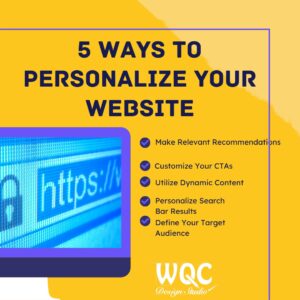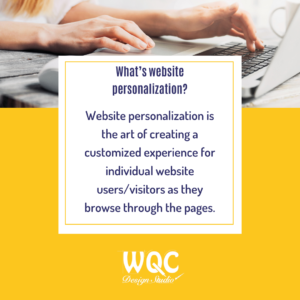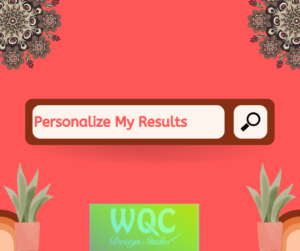 One-size-fits-all websites are phasing out! Consumers now demand more personalized experiences and customized solutions tailored to their needs. Anything short of that is inconveniencing, insufficient and irrelevant!
One-size-fits-all websites are phasing out! Consumers now demand more personalized experiences and customized solutions tailored to their needs. Anything short of that is inconveniencing, insufficient and irrelevant!
In a world where 71% of consumers feel frustrated when a shopping experience is impersonal, businesses can’t afford to ignore the power of personalization. A recent study by Salesforce Research revealed that 66% of consumers expect businesses to understand their unique needs and expectations. This explains why 80% of consumers are likelier to purchase from a brand that offers personalized experiences!
Enters personalized websites! They are intelligent and dynamic digital tools that collect data about the site visitors from previous interactions, browsing history, demographics, and more to understand the users’ intent. They digest that knowledge in a snap of a finger and deliver a tailored experience, from displaying the most relevant content to suggesting the most practical products/services the user might need.
What’s website personalization?
 Website personalization is the art of creating a customized experience for individual website users/visitors as they browse through the pages.
5 Ways To Personalize Your Website
Website personalization is the art of creating a customized experience for individual website users/visitors as they browse through the pages.
5 Ways To Personalize Your Website
- Define Your Target Audience
- Make Relevant Recommendations
- Customize Your CTAs
- Utilize Dynamic Content
- Personalize Search Bar Results
1. Define Your Target Audience
You can’t prepare a meal for someone you intend to please without knowing what they like first. Besides, 52% of consumers expect all offers to be personalized! Therefore, you need to know and understand your target audience, their needs, desired experience, and what they expect from you. The best approach to define your target audience is collecting your audiences’ behavioral, contextual and demographic data, which will help in profiling them
2. Make Relevant Recommendations
One of the best ways to make your website visitors feel at home is by serving them personalized recommendations. When users visit your website, they might be unable to discover all your services and products or read every piece of valuable content (blogs or articles) you have. You need to make it easy for them by recommending relevant and personalized solutions that might help meet their intentions of visiting your website. For instance, e-commerce stores like Amazon recommend complementary or alternative products to potential customers, depending on the first product they checked out or recently bought.
3. Customize Your CTAs
Call-to-actions boost conversion rates by 83%! They guide your web visitors, telling them what to do and where to go. They are, therefore, perfect for personalization! A recent study by HubSpot revealed that personalized CTAs perform 202% better than generic CTAs. You can customize CTAs to enhance user experience and entice users to do whatever you want by adding some sentiment, attractive texts, and personalized trigger words. For instance, if a user visited your site for the first time, you can show them a ‘Free Trial’ CTA, while to an existing customer, you can show them a ‘Dashboard’ or ‘Paid Survey’ CTA.
4. Utilize Dynamic Content
Dynamic content changes depending on the user visiting the website and the device they’re using to do it. It’s one of the best ways to personalize the browsing experience for individual web visitors. The dynamic content is automatically generated based on the user’s behavioural, contextual, and demographic data. Some websites greet their audiences differently depending on their personas. For instance, an adventure accessories store with customers who love hiking, camping, skating, or swimming can salute their customers according to who they are. Example: “Hi hiker” or Ahoy skater” or “Welcome camper.”
5. Personalize Search Bar Results

Search bars help your website visitors find what they need faster. This makes them happy hence enhancing their user experience. But do you know what would make them happier? Tailoring your search bar results to specific users’ needs. This increases conversion rates by X5, which skyrockets sales for your business!
Need Help Personalizing Your Website
 The experts at WQC Design Studio are ready to help! We have over 22 years of experience providing dependable digital marketing solutions to businesses like yours! We can help you custom-make your website to suit your audiences’ specific needs. This will help attract more solid leads to your website, boost sales, retain customers and inspire unwavering brand loyalty!
Get in touch!
The experts at WQC Design Studio are ready to help! We have over 22 years of experience providing dependable digital marketing solutions to businesses like yours! We can help you custom-make your website to suit your audiences’ specific needs. This will help attract more solid leads to your website, boost sales, retain customers and inspire unwavering brand loyalty!
Get in touch! WQC Design Studio Web Design and Development is proudly powered by WordPress